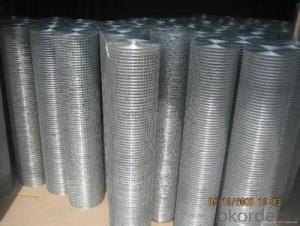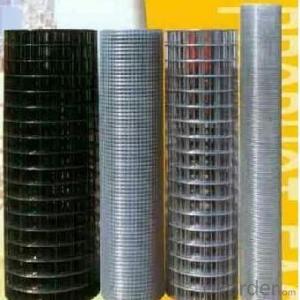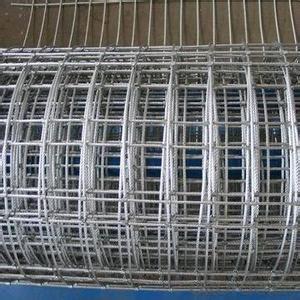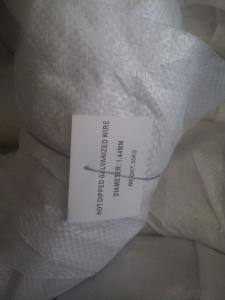Hot dipped Galvanized Hexagonal Wire Netting
- Loading Port:
- Tianjin
- Payment Terms:
- TT OR LC
- Min Order Qty:
- 50 roll
- Supply Capability:
- 5000 roll/month
OKorder Service Pledge
OKorder Financial Service
You Might Also Like
Introduction of Galvanized Hexagonal Wire Mesh
Galvanized Hexagonal Wire Mesh is made of by high quality galvanized wire, Low carton steel wire, stainless steel wire, iron wire, Galvanized steel wire.
Application of Galvanized Hexagonal Wire Mesh
Galvanized Hexagonal Wire Mesh is widely used in industrial and agricultural constructions, Rockwool, fence for poultry cage, fishing cage, playground fence and Christmas decorations
Surface treatment of Galvanized Hexagonal Wire Mesh
a. Black (mild steel wire)
b. Electro galvanized, (galvanized before welding, galvanized after welding)
c. Hot dip galvanized, (galvanized before welding, galvanized after welding)
d. Stainless Steel Wire
Advantage of Galvanized Hexagonal Wire Mesh
Our Galvanized Hexagonal Wire Mesh has strong corrosion-resisting and oxidation-resisting, stable shape, clean ends, good packing with good quality and rock bottom price.
Packing of Galvanized Hexagonal Wire Mesh
1. Waterproof paper then PVC shrinked
2. PVC shrinked only
3. Black waterproof paper only
4. Waterproof paper then metal/wooden pallet
5. Plastic film then carton
(Also as your request. )
Pictures of Galvanized Hexagonal Wire Mesh


Specification of Galvanized Hexagonal Wire Mesh
Mesh Opening | Wire Thickness | Width | |||
inch | mm | bwg | mm | inch | m |
3/8 | 10 | 27; 26; 25; 24; 23 | 0.40-0.63 | 12-48 | 0.3-1.2 |
1/2 | 13 | 27; 26; 25; 24; 23; 22; 21; 20 | 0.40-0.88 | 12-80 | 0.3-2.0 |
5/8 | 16 | 27; 26; 25; 24; 23; 22; 21; 20 | 0.40-0.88 | 12-48 | 0.3-1.2 |
3/4 | 19 | 27; 26; 25; 24; 23; 22; 21; 20 | 0.40-0.88 | 12-80 | 0.3-2.0 |
1 | 25 | 27; 26; 25; 24; 23; 22; 21; 20 | 0.40-0.88 | 12-80 | 0.3-2.0 |
1-1/4 | 30 | 24; 23; 22; 21; 20; 19; 18 | 0.56-1.25 | 12-48 | 0.3-1.2 |
1-1/2 | 40 | 23; 22; 21; 20; 19; 18 | 0.63-1.25 | 12-80 | 0.3-2.0 |
2 | 50 | 23; 22; 21; 20; 19; 18; 17 | 0.63-1.47 | 12-80 | 0.3-2.0 |
3 | 75 | 23; 22; 21; 20; 19; 18; 17; 16; 15 | 0.63-1.83 | 12-80 | 0.3-2.0 |
4 | 100 | 16; 15; 14; 13; 12 | 1.65-2.77 | 20-160 | 0.5-4.0 |
Mesh Opening | Wire Thickness | Width | |||
inch | mm | bwg | mm | inch | m |
1 | 25 | 25; 24; 23; 22; 21; 20; 19; 18 | 0.51-1.25 | 12-80 | 0.3-2.0 |
1-1/4 | 30 | 25; 24; 23; 22; 21; 20; 19; 18 | 0.51-1.25 | 12-80 | 0.3-2.0 |
1-1/2 | 40 | 25; 24; 23; 22; 21; 20; 19; 18 | 0.51-1.25 | 12-80 | 0.3-2.0 |
2 | 50 | 25; 24; 23; 22; 21; 20; 19; 18; 17 | 0.51-1.47 | 12-80 | 0.3-2.0 |
3 | 75 | 23; 22; 21; 20; 19; 18; 17 | 0.63-1.47 | 12-80 | 0.3-2.0 |
FAQ
We have organized several common questions for our clients,may help you sincerely:
1. What is the storage condition?
The Galvanized Hexagonal Wire Mesh should be stored at room temperature and kept from wet and heat source.
2. How to guarantee the quality of the products?
We have established the international advanced quality management system,every link from raw material to final product we have strict quality test;We resolutely put an end to unqualified products flowing into the market. At the same time, we will provide necessary follow-up service assurance.
3. How long can we receive the product after purchase?
In the purchase of product within four working days, we will arrange the factory delivery as soon as possible. The specific time of receiving is related to the state and position of customers. Commonly 7 to 10 working days can be served.
- Q: How is steel wire mesh used in the agriculture industry?
- The agriculture industry extensively employs steel wire mesh for various purposes. Fencing and enclosures are one of its primary applications. Steel wire mesh is frequently used to establish boundaries, safeguard crops and livestock, and prevent unwanted animals from trespassing into agricultural areas. Its robust and long-lasting nature ensures its resilience against the elements, providing reliable security. In addition, steel wire mesh finds significant use in plant support within agriculture. Gardeners and farmers often rely on wire mesh to construct trellises, cages, and supports for climbing plants like tomatoes, beans, and cucumbers. This aids in maintaining the plants' structure, preventing them from toppling over, and facilitating better air circulation and sunlight exposure. Consequently, this results in healthier crops with higher yields. Steel wire mesh is also commonly employed in constructing animal enclosures and cages. It finds frequent utilization in poultry and livestock farming, enabling the creation of secure and safe enclosures for animals. This prevents them from wandering off or becoming prey to predators. By adjusting the mesh spacing according to the animals' size and type, their well-being and safety are ensured. Furthermore, steel wire mesh plays a vital role in the manufacture of beekeeping equipment. It is used to construct bee hives and frames, providing a sturdy structure for the bees to construct their combs and store honey. The mesh's small openings allow for proper ventilation while effectively preventing the bees from escaping. To summarize, steel wire mesh is an indispensable component within the agriculture industry. Its versatility, strength, and durability make it the ideal material for fencing, plant support, animal enclosures, and beekeeping equipment. By providing essential security and support, it significantly contributes to the overall success and productivity of agricultural operations.
- Q: Can steel wire mesh be used for window and door screens?
- Yes, steel wire mesh can indeed be used for window and door screens. Steel wire mesh is a durable and strong material that is commonly used for various applications, including window and door screens. It provides a strong barrier against insects and other unwanted elements while allowing air and light to pass through. Steel wire mesh screens are resistant to corrosion and can withstand harsh weather conditions, making them suitable for both indoor and outdoor use. Additionally, steel wire mesh screens are available in different mesh sizes and thicknesses, allowing you to choose the most appropriate option for your specific needs.
- Q: What are the benefits of using steel wire mesh in the agriculture industry?
- There are several benefits of using steel wire mesh in the agriculture industry. Firstly, steel wire mesh is highly durable and strong, providing excellent protection for crops and livestock. It can withstand harsh weather conditions such as strong winds and heavy rainfall, ensuring that the agricultural assets remain safe and secure. Secondly, steel wire mesh is an effective barrier against pests and predators. It can be used to create fences and enclosures that keep out animals that may damage or consume crops. The mesh prevents larger animals from entering while still allowing air and sunlight to pass through, creating a balanced environment for growth. Additionally, steel wire mesh is versatile and can be used in various agricultural applications. It can be used to create cages for poultry and livestock, protecting them from potential harm while allowing proper ventilation. It is also commonly used as trellis support for climbing plants, promoting healthier growth and maximizing space utilization. Moreover, steel wire mesh is cost-effective and low-maintenance. Once installed, it requires minimal upkeep and can last for many years, reducing the need for frequent replacements. This makes it a cost-efficient choice for farmers and agricultural businesses. Lastly, steel wire mesh is environmentally friendly. It is recyclable and can be reused or repurposed for other applications, reducing waste and contributing to sustainable practices in the agriculture industry. In conclusion, the benefits of using steel wire mesh in the agriculture industry include durability, protection against pests and predators, versatility, cost-effectiveness, and environmental friendliness. These advantages make it an ideal choice for farmers and agricultural businesses looking to enhance productivity and safeguard their assets.
- Q: Is steel wire mesh suitable for electrical grounding?
- Steel wire mesh is indeed appropriate for electrical grounding. This material possesses conductivity that enables efficient transportation of electrical currents and offers a pathway of low resistance for the discharge of electrical charges. It serves as an efficient grounding mechanism, safeguarding against electrical shocks and guaranteeing the well-being of electrical apparatus and individuals. Nevertheless, it is crucial to guarantee the correct installation, connection, and bonding of the steel wire mesh to the grounding system in order to achieve effective electrical grounding.
- Q: Can steel wire mesh be powder coated?
- Yes, steel wire mesh can be powder coated. Powder coating is a popular finishing technique used to apply a durable and decorative coating to various metal surfaces, including steel wire mesh. It involves electrostatically applying dry powder onto the mesh, which is then cured under heat, creating a smooth and even coating. This process enhances the mesh's appearance, corrosion resistance, and overall durability.
- Q: How does steel wire mesh perform in terms of chemical resistance?
- Steel wire mesh generally has good chemical resistance due to its material composition. It is highly resistant to corrosion, making it suitable for various industrial applications involving exposure to chemicals. However, its performance can vary depending on the specific chemical and concentration. In some cases, certain aggressive chemicals may cause corrosion or degradation of the steel wire mesh over time. Therefore, it is advisable to consider the specific chemical environment and consult with experts or manufacturers for the best-suited steel wire mesh for chemical resistance.
- Q: What is the difference between alkali-resistant fiberglass mesh and hot-dip galvanized steel wire mesh?
- Alcohol-resistant fiberglass mesh is soft and can only play the deformation of the deformation of the amount of deformation (deformation outside the amount of deformation), and can not be allocated for the tile layer to withstand tension.
- Q: Can steel wire mesh be cut?
- Yes, steel wire mesh can be cut. Steel wire mesh is made from strong and durable steel wires that are woven or welded together to form a grid-like pattern. It is commonly used in various applications such as fencing, construction, and filtration. There are several methods to cut steel wire mesh. One common method is by using wire cutters or metal shears. These tools are specifically designed to cut through different gauges of steel wire. They provide a clean and precise cut, allowing you to easily shape or resize the mesh according to your needs. Another method is using power tools such as angle grinders or reciprocating saws equipped with metal-cutting blades. These tools are more suitable for cutting thicker and larger sections of steel wire mesh. However, caution must be exercised when using power tools as they can generate heat and sparks, so appropriate safety gear and precautions should be taken. It is important to note that cutting steel wire mesh may cause the cut ends to be sharp and potentially hazardous. To prevent injuries, it is advisable to wear protective gloves and handle the cut edges carefully. Additionally, the cut sections of the mesh may need to be smoothed or finished to avoid any rough or jagged edges. In summary, steel wire mesh can be cut using wire cutters, metal shears, or power tools with appropriate blades. However, precautionary measures should be taken to ensure safety, and the cut edges may require additional finishing for a neat and safe result.
- Q: What is the fixed wire mesh in the building?
- Different from the nails, steel nail carbon content of 0.2-1.7%, higher than the nail hardness.
- Q: Is steel wire mesh suitable for use in soundproofing applications?
- Yes, steel wire mesh can be suitable for use in soundproofing applications. It offers a strong and durable barrier that can effectively block or reduce sound transmission. However, the effectiveness of steel wire mesh in soundproofing depends on various factors such as its thickness, density, and installation method. Additionally, combining it with other sound-absorbing materials can enhance its performance in reducing noise.
Send your message to us
Hot dipped Galvanized Hexagonal Wire Netting
- Loading Port:
- Tianjin
- Payment Terms:
- TT OR LC
- Min Order Qty:
- 50 roll
- Supply Capability:
- 5000 roll/month
OKorder Service Pledge
OKorder Financial Service
Similar products
Hot products
Hot Searches
Related keywords




























